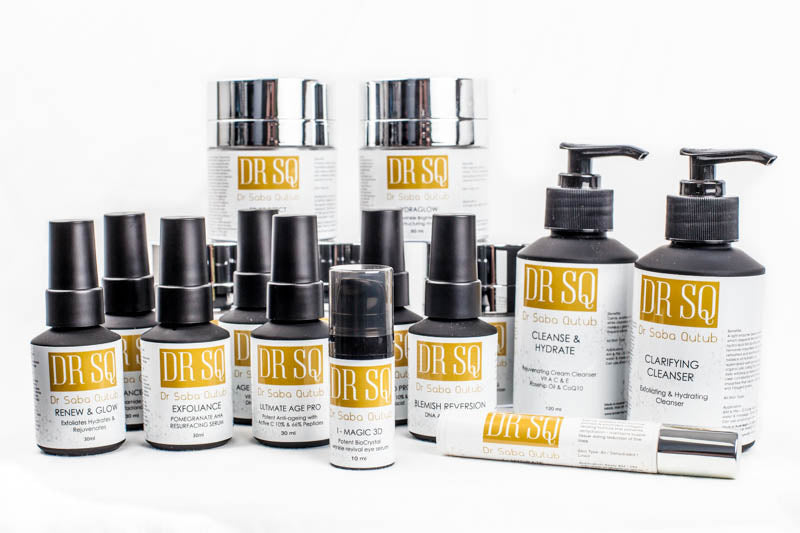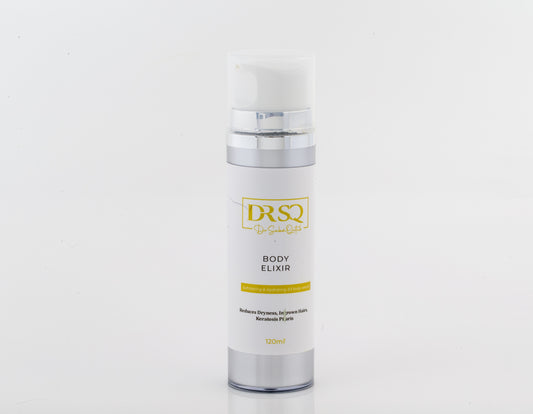Pigmentation

What is Melasma? Types, Symptoms, and Cure
Not every dark patch is a sign of pigmentation; it can be melasma, a common skin condition causing skin discolouration...
What is Melasma? Types, Symptoms, and Cure
Not every dark patch is a sign of pigmentation; it can be melasma, a common skin condition causing skin discolouration or dark patches. Melasma can often fade away on its own, but sometimes, it can become a major concern if it starts to spread. In this blog, we will explore everything you may want to learn about melasma to better treat it, including underlying causes, types, and treatments. What is Melasma Melasma, also known as chloasma, is a common skin condition identified by dark patches of brown, blue, or grey colour in the form of freckle-like spots. The term is interchangeable with the "mask of pregnancy" due to its frequent chances to affect pregnant women. It is more widespread in darker skin tones than in individuals with lighter skin tones. Melasma is no big deal for the skin, usually harmless, and can subside without any treatment. However, if it remains on your skin, skincare ingredients like azelaic acid, hydraquinone, and procedures such as microneedling can make a difference. Types of Melasma A black light may be used to assess the spread of melasma within the layers. There are three types of melasma categorised on the basis of pigmentation depth, how defined its edges, and how it reacts to the treatment. Dermal Melasma: Suggested by the name, dermal melasma affects the deeper skin layer, the dermis. Identified by a light brown colour, sometimes maybe a little bluish, with a hazy outline, it looks the same under or without the wood's lamp black light. This indicates the melasma is deep and stubborn. Dermal melasma may not go away with a simple, easy treatment. Regular clinical procedures like dermabrasion can be required. Epidermal Melasma: This affects the epidermis, the top layer of your skin and forms uniform and dark patches mainly on the face. When examined under the dark light, patches are visible because they are closer to the skin's surface and accommodate well to the treatment. Mixed Melasma: The most prominent among the three is mixed melasma, which imparts both brown and light blue patches. They can react to the treatment and show characteristics of both mild and intense pigmentation. Melasma Causes & Triggers Some studies believe that iron and vitamin B12 deficiency can cause melasma. While the exact cause of melasma is yet to be determined, multiple factors can contribute to this skin condition, including; Hormones: Increased levels of estrogen receptors in melasma lesions can trigger melasma in non-pregnant women, and progestrone given to women going through post menopause can also develop melasma. Low thyroid function or hypothyroidism could also account for melasma. Pregnancy: Pregnant women are at high risk of developing melasma. But the precise reason behind this is still undiscovered. Some experts believe that melanocyte-stimulating hormones, along with progesterone, can be behind this, making it likely to develop during the second or third trimester. Genetics: Individuals with a family member dealing in the family with melasma may encounter it too. Melasma is witnessed in the majority of both identical twins. UV Exposure: Sun exposure can encourage the symptoms of melasma by stimulating the overproduction of melanin. Frequent or prolonged stay under the sun can be harmful. Apply SPF moisturiser before going out under the sun for long-term protection and early prevention. Wrong Skincare Products/Ingredients: Using something that your skin cannot tolerate may cause melasma by irritating the skin. LED Lights: Lights from your digital devices, like phones, tablets, and laptops, can cause melasma. Melasma Symptoms Melasma brings about dark-coloured brown-bluish patches on the skin that can be inflamed, itchy or red. They appear like freckles many times. Melasma can develop across different body parts, including neck jawline shoulders arms Cheeks nose forehead upper lip According to research by the American Academy of Dermatology, women have a 90% higher likelihood of getting affected by melasma compared to men. Individuals are more susceptible to developing melasma if they are; women in reproductive age dark-skinned people How to Treat Melasma Melasma is treatable, and sometimes goes on its own. If it has happened due to hormonal changes, pregnancy, or certain medications, it usually fades away once these factors return. You can get rid of melasma with some effective skincare ingredients, a disciplined routine, and lifestyle changes. However, it can come back once you’re done with the treatment. Seeking your doctor is an ideal way to understand your melasma to set up an efficient treatment approach. A few topical ingredients can make a difference to the skin struggling with melasma. Most of them are tyrosinase inhibitors. Hydroquinone: It takes around a few weeks to months to show results with this ingredient. It is applied directly to the patches. Azelaic Acid: It's available as a cream, gel, or lotion and is safe for pregnant women to use. Tretinoin: A good option among topical retinoids, this helps to increase cellular turnover and can be combined with hydroquinone. This one is to avoid in pregnancy. Trenexamic Acid: Oral trenexamic acid, cream, or lotion can show a significant but slow difference in melasma spots. Helps with post-acne hyperpigmentation, too. Hydrocortisone: Hydrocortisone can be a temporary solution for the redness and itching associated with melasma. However, it's not s long-term solution. Some chemical procedures can have a positive effect on severe melasma, like; Non-ablative fractioned lasers, intense pulsed light, and low fluence Q-switched lasers. Your doctor can guide you best on these. Multiple sessions may be required to see significant changes. Chemical peels can allow your skin to regenerate and make it even. The microneedling procedure creates tiny cuts in your skin, resulting in a reformed skin tone. Platelet-rich plasma is another procedure or therapy that takes a small amount of blood, processes it in a machine and reintroduces it to your skin with an injection. This heals the skin and makes the complexion brighter and clearer. Making some lifestyle changes can improve melasma. Avoid triggers that can encourage redness or worsen the condition, like using digital devices with LED screens from a very close distance, roaming under the sun without SPF for long periods, waxing the skin or using perfumed soaps or other scented products. DRSQ's Skin Bright serum has tetrapeptide-30 to help with melasma. It evens the skin tone, brightens the complexion and lightens the dark spots. Cleanse your skin with any of the suitable cleansers, apply this Skin Bright serum all over the face and end the regimen with a non-greasy moisturiser. Hyperpigmentation Vs Melasma Hyperpigmentation and melasma may look similar on the skin, but they are different. Melasma is a skin condition and a kind of hyperpigmentation that happens primarily due to changes in hormones, and sun exposure can exacerbate the condition even worse. Hyperpigmentation can occur after an acne, due to hormonal imbalances, or even after a skin injury. It can occur on any body part, including the legs and back. Manifesting in several patterns like spots, patches, straight streaks, or undefined shapes, hyperpigmentation can occur in mild to severe form. It may or may not need a treatment that includes topical agents, procedures, and therapies. Also Read: 6 Effective Ways to Get Rid of Hyperpigmentation Melasma in Pregnancy Pregnant women have an elevated risk of developing melasma. Accurate reasons behind this are still unknown, but some doctors suggest it may be due to fluctuating hormones, particularly progesterone and estrogen. It is most likely to begin in the second to third trimester when one can notice the dark patches on various body parts, including the pubic area, belly, areolas, and around the mouth. A study revealed that melasma affects 15% to 50% of pregnant women. Another study suggests chloasma (melasma during pregnancy) can affect 50-70% of pregnant women. FAQs Can vitamin C remove melasma?Topical vitamin C can reduce melasma. Though more studies are required to validate this fact and one needs to be consistent with its usage to witness effective results. You can consult your doctor to get a prescription for a tyrosinase inhibitor to fade your melasma patches away. Is melasma a form of cancer?No, melasma is not a form of cancer or in any way cancerous. It is a harmless skin condition that happens due to overproduction of melanin in the skin. Can melasma fade away on its own?Yes, melasma often goes away on its own without any treatment. When the causative elements, such as pregnancy or hormonal fluctuations, return, melasma also goes back, but it can take a few months. How to cure melasma from the inside?You can address the internal factors linked to melasma, like hormonal changes, dietary choices, and getting enough rest. Vitamin C, retinoids, carotenoids and unsaturated fatty acids can aid in the condition.Stress can contribute to the increased estrogen levels, leading to melasma. Managing your stress level is compulsory by trying mind-healing practices and a good, healthy sleep. References: Nicoleta Neagu, Claudio Conforti, Marina Agozzino, Giovanni Francesco Marangi, Silviu Horia Morariu, Giovanni Pellacani, Paolo Persichetti, Domenico Piccolo, Francesco Segreto, Iris Zalaudek, Caterina Dianzani, "Melasma treatment: a systematic review", 2022 Jun Thierry Passeron, Mauro Picardo, "Melasma, a photoaging disorder", 2018 Jan Brent J Doolan, Monisha Gupta, "Melasma", 2021 Dec Rashmi Sarkar, Saloni Katoch, "Chemical Peels in Treatment of Melasma", 2024 Jan
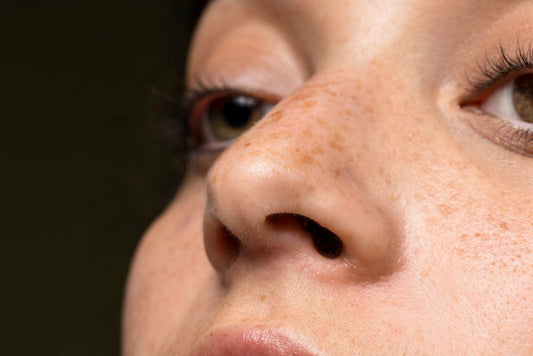
How to Use Niacinamide for Pigmentation?
Skin pigmentation can be more persistent than you think, and exploring the right skincare ingredient can be overwhelming with so...
How to Use Niacinamide for Pigmentation?
Skin pigmentation can be more persistent than you think, and exploring the right skincare ingredient can be overwhelming with so many options around. You may have tried everything but seen no improvement, making you frustrated and clueless. This is your sign to start considering niacinamide in your skincare regimen to target pigmentation. However, knowing this is not enough. What is niacinamide and does it really help with pigmentation, if yes, then how to incorporate this active ingredient into your skincare routine; we will get all these queries resolved in this blog. What is Niacinamide & Its Benefits Niacinamide, a derivative of vitamin B3, occurs naturally in nature and is a must-have vitamin for you, including your skin. When taken in the topical form, it becomes super-easy for it to get absorbed into your skin. Generally considered a gentle ingredient, it suits almost all skin types. Moreover, you can easily apply it in the morning or nighttime skincare routines. Considered an all-rounder skincare ingredient, niacinamide assists in skin healing from different forms of acne to fighting the signs of ageing. Oily skin types can reap benefits from this ingredient to wipe out the excess oil production. By controlling the oil, it resolves several issues like acne, pimples, and enlarged pores. Moreover, niacinamide is powerful enough to make your skin even toned and fights the early signs of ageing, including fine lines by boosting the production of collagen. Apart from this, if you are facing redness on your skin due to some reaction, niacinamide has shown proven benefits. It aids in enhancing skin's hydration as well. If one is dealing with dry skin and a broken moisture barrier, using niacinamide consistently can help improve the condition as it provides intense hydration. Understanding Pigmentation and Its Causes Melanin, a pigment in the skin made by melanocytes - a kind of skin cell, is responsible for inducing colour to your skin. When melanin undergoes disruptions of changes, it can cause disorders like hyperpigmentation in which the dark spots occur, hypopigmentation in which the light spots occur, or depigmentation in which the white spots occur on the skin. Let’s discuss these types in detail; 1. Hyperpigmentation: Sometimes, melanin content becomes too high in the skin causing it to become much darker than your actual skin tone. But why does this happen? Multiple factors lead to dark spots such as, Scars from acne, also called post-acne hyperpigmentation Age spots and birthmarks Excessive exposure to the sun Addison's disorder Pregnancy or birth control medicines 2. Hypopigmentation: When the amount of melanin gets extremely low, you can notice some lighter spots on the skin, which is called hypopigmentation. Some of the factors that can contribute to hypopigmentation are; Albinism which is a genetic condition happens rarely. Sun exposure Ulcers and blisters Skin infections and injuries Psoriasis and eczema 3. Depigmentation: There can be certain circumstances where your skin tends to lose its pigment up to a great extent, and that turns your skin white. Vitilogo is a common example which is an autoimmune disease. Does Niacinamide Help with Pigmentation? Yes, it does. Niacinamide is proven to be a safe skincare ingredient for tackling pigmentation issues. Niacinamide can be a skin-lightening agent that is highly safe compared to bleaching agents and chemical peels. Let's see how it acts on your dark spots; Niacinamide acts on melanin synthesis and can reduce it which further controls hyperpigmentation or dark spots to widespread. Moreover, it minimises dark spots and makes your skin appear smoother and radiant. By boosting the production of collagen, this ingredient ensures your skin remains elastic and firm adding to its overall complexion. How to Incorporate Niacinamide Into Your Skincare Routine Niacinamide being an all-rounder skincare ingredient is comparatively easy to use, can be combined with other skincare ingredients, and benefits the skin with various concerns at once. Cleanse first as it makes your skin a clean surface prepared to welcome other ingredients. Then, take a niacinamide serum and dispense it with the help of a dropper on your face and neck. Use fingertips to spread it evenly. Next, you should know to wait a little after applying niacinamide serum. It allows the serum to get absorbed into the skin and reach up to the innermost layer of the skin addressing the issue from within. Then, you can put on moisturiser. A skin-firming and hydrating moisturiser works and locks the skin’s moisture along with intensely hydrating it. Foremost, you can use it either in your daytime or nighttime depending upon your preference as it brings about no complications in any part of the day. It doesn't react with sunlight and is mild in nature. Due to its convenient nature, you can use it daily. In fact, it is better to use it every day for better results. What to Pair with Niacinamide to Maximise Results To increase the impact of your treatment, you can pair niacinamide with some other ingredients. To your note, not all ingredients are safe to get combined and you must ask your dermatologist before taking any action. Niacinamide and Retinal Niacinamide and retinal can work as a wonderful team together to increase the cell turnover of your skin which is responsible for decreasing the transfer of melanosomes. This process helps in pigmentation reduction and gives you blemish-free and smooth-textured skin. It also aids in getting rid of acne scarring. Niacinamide and Vitamin C Vitamin C aids the production of collagen in the skin and when it gets paired with niacinamide, together it targets hyperpigmentation and dullness of the skin. This duo brightens the skin and makes it firm and healthy with regular use. Niacinamide and Salicylic Acid Individuals suffering from post-inflammatory pigmentation can try this combination. By encouraging cellular growth, they promote gentle exfoliation resulting in clear and bright skin while treating the redness, and risks of future breakouts, and reducing skin congestion. Niacinamide and Alpha Arbutin Commonly recommended by dermatologists, niacinamide combines well with alpha arbutin when it comes to eliminating dark spots and blemishes. Skin discolouration caused by various reasons, including environmental aggressors, UV rays, inflammation, and any allergies can be fought with this pair of ingredients. When to Expect Visible Improvements There is no one-word answer to this question. It depends on multiple factors ranging from your skin type, concern, the kind of serum you are using, the ingredients it contains, and lot more. Some users with the proper use can witness mild differences in 3 to 4 weeks, especially if their dark spots are mild. After 4 to 8 weeks, the pigmentation may start to fade and significant changes can be noticed after that period. However, the results may vary with the concentration of the serum too. You must consult your dermatologist for the same. While it's important to choose the right serum to target your concern, you must have patience to gain results. It's not something that can show the difference in your skin overnight, you require discipline. Make a skincare routine with a niacinamide serum and be regular with it. If you are lazy or skipping applications, the process of improvement can take much more time than it takes in normal circumstances. Best Serum with Niacinamide for Pigmentation DRSQ brings you Radiance 3D - 10% niacinamide serum. This concentration is ideal to hone in on your skin pigmentation. It is infused with ultra-low weight hyaluronic acid to reduce immune-derive inflammation, and sodium PCA to deeply hydrate the skin as its primary ingredients along with glycerin and rose water. If you have been dealing with hyperpigmentation for a long or facing acne-scarring, this serum is your trusted companion. You can incorporate this into your daily routine, including the AM as it protects against sun exposure, makes your skin bright, and saves from excessive dryness. However, it’s entirely a safe formula to be used twice a day as well. Conclusion While niacinamide can help you addressing multiple skincare concerns simataneously, it has shown proven outcomes when it comes to hyperpigmentation. For better and faster results, you can pair it with vitamin C, alpha arbutin, and salicylic acid after taking your skin expert's advice. These duos can make your skin free from various ongoing concerns and amplify the results.
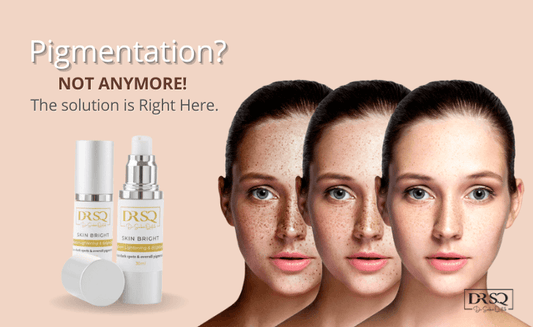
Pigmentation? Not Anymore! The solution is Righ...
Hyperpigmentation refers to a broad range of skin alterations that are often undesirable, such as dark areas left behind by...
Pigmentation? Not Anymore! The solution is Righ...
Hyperpigmentation refers to a broad range of skin alterations that are often undesirable, such as dark areas left behind by blemishes, sun damage spots, or hormone-induced melasma. These types of discolouration, which are often difficult to correct, are brought on by the melanocytes, the cells that give your skin it’s colour, depositing more pigment in deeper layers of the skin. The Ideal Remedy for Skin that Glows. Your basic skincare regimen usually consists of cleansing, toning, moisturising, and sunscreen. However, if a face Pigmentation Serum isn't included in this mixture, your skin won't receive the most satisfactory outcome. Continue reading to find out everything there is to know about face serums and the many benefits of utilising them if you are open to changing your skincare routine. What is a Face Pigmentation Serum? If you treat your daily skincare routine as a three-course dinner, particularly the one you do before bed, the face serum would be the main dish. Serums have active ingredients and optimum molecular size to penetrate deeper into the skin, hence treating the skin from the inside out. They are also packed with nutrients that are needed for optimum skin health. Face serums can be transparent, gel- or oil-based liquids typically referred to as mild moisturisers. Face serums include a higher concentration of functional chemicals than traditional moisturisers, such as hyaluronic acid, glycolic acid, and vitamin A,B & C. With a full concentration of active chemicals to address particular skin conditions, serums are thin, quickly absorbing liquids. Serums can produce significant results since they are so concentrated and they penetrate deeper into the dermis. The pigmentation of the skin is one specific issue that serums can help with. Pigmentation results when melanin, the pigment that gives skin its colour, is produced excessively. An uneven skin tone or dark spots may appear when melanin is produced in excess. If you are confused about numerous Pigmentation serums available in the market, here are some recommendations for you. Skin Bright Serum - An Active serum that brightens, calms, and decreases pigment production. Niacinamide, Symwhite, tyrosinase and melanin inhibitors, free radical blockers, and UV filters combine powerfully to enhance the effects of each ingredient in a cascade manner. Reduced pigment formation and skin brightness are the overall effects. Your skin has an even, brilliant glow after this treatment. Or you can check out our most popular Acne-Blemish Prone Skin Serum & Essentials Kit, right from here. How to Use Face Hyperpigmentation Serum for Best Benefits? Face serum is a concentrated facial treatment that delivers active ingredients directly to the skin. It can be used to target specific skin concerns such as wrinkles, fine lines, and dark spots. Face serum is typically applied before moisturiser and is available in a variety of formulas to suit different skin types. If you want to use face serum for the best benefits, follow these steps— Cleanse your face with a gentle cleanser. Apply the face Hyperpigmentation Serum to your face and neck. Gently massage the face serum into your skin. Allow the face serum to absorb into your skin for a few minutes. Follow with your usual moisturiser. Check out from our popular Cleanser Collections, I'm sure you'll love em' out… Last but not least, it is advisable to speak with our DRSQ professional team before including any product in your skin-care routine if you are concerned about any unanticipated negative effects. You can schedule a free appointment with our beauty specialist to get further advice. You can call us on 03 5211 4891 to book a free skincare consultation. We have a fantastic Essentials Kit with us that lets you in case you're interested in that… Get a Skin that is Radiant & Bright. You get a radiant, luminous complexion as the kit treats pigmentation and uneven skin tone. An activated charcoal complex detoxifying cleanser, a skin-brightening peptide serum, and a zinc-enriched UV shielding luminous moisturiser are the three components that make up this set. Most people's primary skin concerns have been uneven skin tone and pigmentation. For some people, elbow, neck, and other body part hyperpigmentation and darkening might cause self-esteem concerns. Even though you might think about seeking expert assistance, buying a quality pigmentation cream might be the first step toward achieving even beautiful-looking skin. Being individuals, each of us has a different type of pigmentation. A professional from DRSQ Skin Care can help you understand the nature of your skin and the optimal treatment and maintenance plan for you, which is better than having general guidance on treatment, UV protection, and pigment-inhibiting skincare.
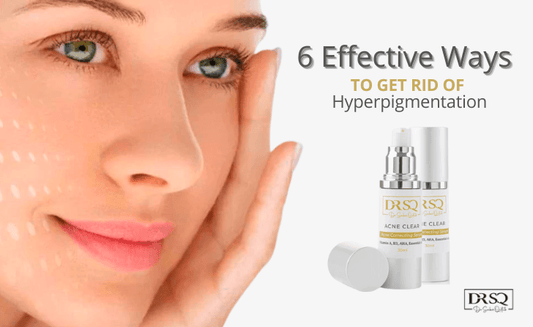
6 Effective Ways to Get Rid of Hyperpigmentation
Uneven pigmentation and blemishes are something that most of us experience through various stages of our lives. There are numerous...
6 Effective Ways to Get Rid of Hyperpigmentation
Uneven pigmentation and blemishes are something that most of us experience through various stages of our lives. There are numerous causes for Hyperpigmentation and blemishes, the major ones being sun damage, hormone changes, post-inflammation and the natural ageing process. But timely intervention can help us reduce hyperpigmentation and restore the even glow of the skin. Before we dwell further into how to reduce hyperpigmentation, let's understand what can lead to this process. Causes of Hyperpigmentation Some of the major causes of hyperpigmentation are as follows: Skin Inflammations: Various forms of skin inflammation, such as acne, skin cuts, eczema, and insect bites, can lead to skin inflammation. In fact, even if you rub or scratch your facial skin too hard, this can lead to inflammation which often causes hyperpigmentation. Long Exposure to Sun: While sun rays do benefit the human body in terms of the production of Vitamin D, they are also responsible for the production of melanin which offers a tan to the skin. This tan is a defence mechanism of the human body against harmful sun rays, but long and frequent exposure may lead to hyperpigmentation. Medications and Medical Conditions: Some medical conditions, such as Addison's Disease etc. can lead to hyperpigmentation. Besides, some antibiotics and anti-inflammatory drugs too lead to the developments of pigments on the skin. In fact, Some chemotherapy medicines can also cause temporary hyperpigmentation. Hormone Changes: In females, hormone changes through periods of pregnancy, breastfeeding and menopause can also trigger uneven pigmentation. How to Prevent and Reduce Hyperpigmentation: After knowing the major reasons and causes of hyperpigmentation, let us know some effective tips and tricks to prevent the process and also get rid of it once it occurs over your facial skin: The first and very important step to prevent hyperpigmentation is to prevent your skin from sun damage. You already know that sun rays can lead to a lot of damage to your skin and therefore, you need to wear sunscreen before you step out. Don't forget to protect your eyes with a good pair of sunglasses. Do not scratch or pick your facial skin in any case. It is so tempting to burst a pimple on the face or scratch a mosquito bite or squeeze a blackhead out of your face. However, as funny as it appears to be, it is actually quite dreadful for your skin. Scratching or picking the skin will lead to an increase in inflammation and will also cause discolouration of the skin. Make sure you pick the correct skincare and treatment products in case of hyperpigmentation. If you experience a stinging condition or your skin burns after using some beauty product, make sure you discontinue using the product. It's obvious that something that suited your friend's skin might not suit you. So make sure to pick the correct product, and if it causes any harm to your skin, discontinue the same and consult your doctor. Make sure to keep your skin hydrated with some good hyperpigmentation serum and creams. You can go for some really cool and effective products such as Anti Acne and Hyperpigmentation Serum from DRSQ which are specially meant to prevent and cure this pigmentation process. You can go for the one according to your skin type and use it according to the description of the product. And again, if this serum or cream is causing any sort of irritation, you can discontinue the usage and go for a better product. Consult your doctor and get to know the reasons for hyperpigmentation on your skin. If these reasons are because of your lifestyle, you can always bring changes in your lifestyle, living habits and travelling so that you can prevent damage to your facial skin. Besides, the skin experts will also suggest pigmentation removal processes such as dermabrasion, chemical peels or microdermabrasion etc. All these processes look easy but the experts suggest them to be your last retort in case of hyperpigmentation. Go for everyday home products which can be applied to your face to get rid of dark spots and hyperpigmentation easily. Some of the products such as aloe vera gel, turmeric powder, apple cider vinegar, green tea extracts, onion juice, lemon juice, milk and yoghurt etc. are pretty good to get rid of unwanted pigments on your facial skin. These are some of the ways in which you can help prevent and reduce uneven pigmentation.
